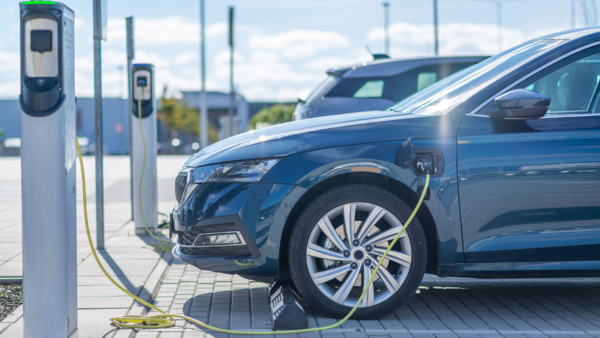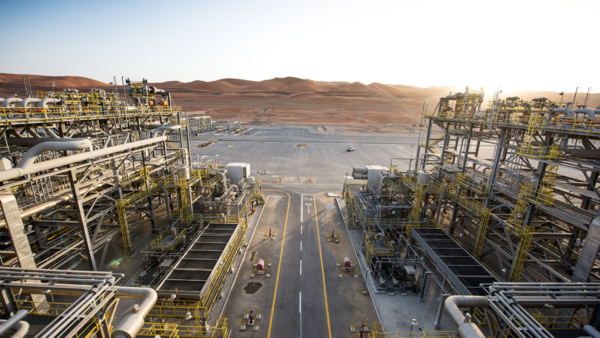This study takes on some interesting points when considering how clean electric vehicles are supposed to be. This study is a collaboration between Aramco And IIT Kanpur and one needs to take note of the fact that Aramco is a Saudi Arabian oil company. A major question that has arisen about this study is whether the study could be in favor of petrol/diesel vehicles as they are the end consumers of Aramco’s products? To answer these questions and find the facts about the emissions gap between EVs and IC vehicles, we spoke to Aramco’s chief technology officer, Ahmed Al Khowaiter. Below are excerpts from the conversation.
Ahmed Al Khowaiter, Chief Technology Officer, Aramco.
TOI Auto: The study provides a lot of interesting data points but does it favor internal combustion engines because they are important to your flagship product?
We always insist on the highest standards of publication, so in this example it is Nature Communications which is globally recognized as the highest standard among scientific publications. We believe this is the only way to ensure the integrity of the study. Also giving wrong answer is not in our interest. For us, this research is the cornerstone of our investment and future strategy. So, we have to understand what is truth and we need to understand what will be the future and what are the best options. That’s why we always do our research in a transparent and open manner and are very clear about our objectives behind such research. We have published studies in North America, Europe, China, the Middle East and now India. We have a reputation and we want to maintain that reputation of transparency and fairness.
Is there a particular segment of passenger vehicles where the difference in emissions exists or is significantly higher than others?
It is not just a segment but more about the geographical location. A vehicle’s carbon footprint or Complete Life-Cycle Assessment (LCA) depends on three key factors – its production carbon footprint (manufacturing-linked emissions), the actual fuel consumption from that vehicle during its duty life, and the third. The carbon density of its fuel source is . Emissions associated with fuel production will also have to be accounted for. So it becomes difficult for an ordinary person to really know their actual carbon footprint and these types of studies shed light on this.
In the study specific to India, it was identified that there are huge variations between regions where the carbon footprint for four wheelers will be 15 percent higher in the East and 40 percent less in the North East. This is because eastern and western India depend on coal for their power grids. This huge gap means that India needs sector specific policies to encourage optimal means of emission reduction.
What types of vehicles did you consider for the study?
If we look at the average vehicles sold in India, in 2018-19, 65 percent of the sales were of petrol vehicles and 35 percent of diesel vehicles, which includes 5 percent of CV sales. We had fewer EVs sold during that year so it’s very difficult to make an average comparison. What we did instead was to pick vehicles where you know you have comparable petrol/diesel and electric models (Tata Nexon, Tigor, Mahindra Verito etc.). We evaluated these models not only in terms of area, but the duration of when you charge them, and more because power will fluctuate throughout the day as well. If you have a tendency to charge overnight, which is very common, then you rely more on non-renewables. At that time, in the absence of sunlight, one could have depended more on fossil based electricity. This is why we have higher emissions during night time charging and in winter.
Why do you think hybrids are more suitable for India in the short term than electric vehicles?
It is indeed a worldwide observation, that hybrids have a faster means of reduction in emissions, and there are a few reasons for this. One is that in the case of grids with high carbon density, they immediately provide a low carbon footprint. A Toyota study showed that the limited availability of lithium-ion batteries means that it is possible to achieve greater emissions reduction effects in hybrid vehicles using that limited amount. In a hybrid you use a battery of about 3kWH or up to 5kWH, while in a pure EV around 80-100kWH of battery can be used. This means fewer cars with a lower carbon footprint could be made but if you were getting the same reduction with a hybrid with only a 2kWH battery, then more cars would be produced, which could have similar emissions reductions.
Which is the cleanest area in India from the point of view of charging and what are your views on two wheelers in India as their population is more than cars?
While discussing best area we need to understand how to define best? Looking at emissions, I would suggest that it is the North-East region. Simply because you have a lot of hydroelectric power and a lot of natural gas. In the western and eastern regions, 90 percent of electricity is generated from coal. However, the number of registered EVs and conventional vehicles in the North-East is very less, so this also needs attention. I think what is more interesting is that in case of two wheeler, an electric is the best option.

what makes you say that?
This is for two main reasons. One is that the size of the battery is very small so manufacturing emissions are very low. Secondly, electric two wheelers are more efficient and petrol two wheelers are not efficient enough and you can’t really hybridize them efficiently and it doesn’t make any commercial sense due to price ranges.
what are your thoughts biofuel,
The whole field of low carbon fuels is very exciting and biofuels are a form of low carbon fuels. They make use of the negative emissions of low carbon plants. However, biofuels obtained from different sources have different levels of carbon footprint, so validation certification is important for them to play a real meaningful role. While they are costlier than conventional fossil fuels, we favor biofuels but we are also bringing synthetic fuels to market. In simple words, it is basically renewable energy that combines with electrolysis to produce green hydrogen and combine it with CO2 to produce methanol in gasoline. Therefore, these fuels can be produced synthetically from renewable energy.
In addition, there is hydrogen which is the ultimate low carbon fuel. We are doing a lot of work in the field of low carbon-hydrogen worldwide through our Blue-Hydrogen and Blue-Ammonia technologies. It may eventually be a competitive option but hydrogen is still quite expensive. However, we see that coming down and entering many new markets over the next 10 years.
Do you see a near to medium term future for synthetic fuels in India?
Right now we are focusing on Europe and other markets that really encourage synthetic fuels because they are expensive. But over time, as the cost of green hydrogen goes down, it will become similar to petrol or diesel. So, the markets we’re trying to enter right now can and really need to. They will be aviation, which has been mandated to use sustainable fuel. Today most of the sustainability needs of aviation are being met by biofuels, but we are also seeing the beginning of the production of synthetic hydrogen-based fuels.
Hybrids have not yet gained much popularity in India. Do you see a viable future for them in view of the upcoming EVs?
We think that on a global scale, hybrids really have the biggest role in reducing emissions from ICE engines. In terms of improving combustion-efficiency and making an immediate impact around the world, we think there will be a mix of hybrid and other technologies going forward. The share of pure EVs will undoubtedly increase but it makes a lot of sense to accelerate the pace of low-carbon and alternative fuels. In the case of urban areas, there are additional benefits of reducing particulate emissions into the atmosphere. From here there will be a big uptake of electric vehicles. Therefore, hybrids have a big role to play in the overall picture, but this can happen only if the policies are rational and optimized.
Policies have to look at the entire life cycle for rational and optimal decision making. This means that only the usual type of regulation on tailpipe emissions can actually lead to negative consequences. Therefore, it is best to look at a complete life-cycle from every point of view from the source of energy to the end use of the energy.

What do you think about the scope of reducing fuel production emissions in India?
For example, India has a lot of opportunities in terms of oil production. India doesn’t have that big a production but things like eliminating gas flames and methane leaks as in LNG system are good business practices because you are saving products so there is basic economics behind it. It also has a significant impact on emissions as methane contains 70x CO2. Any provision to reduce leakage from the LNG system would result in a significant reduction in emissions. Such practices will make the industry more competitive in the future, as the company’s low emissions will become the differentiator.
last but not the least. How important is India to you from an oil perspective?
India is one of our biggest markets. It is at least one million barrels per day and it is going to be number 1 in the future. We know that is why we are very interested in India’s growth story.